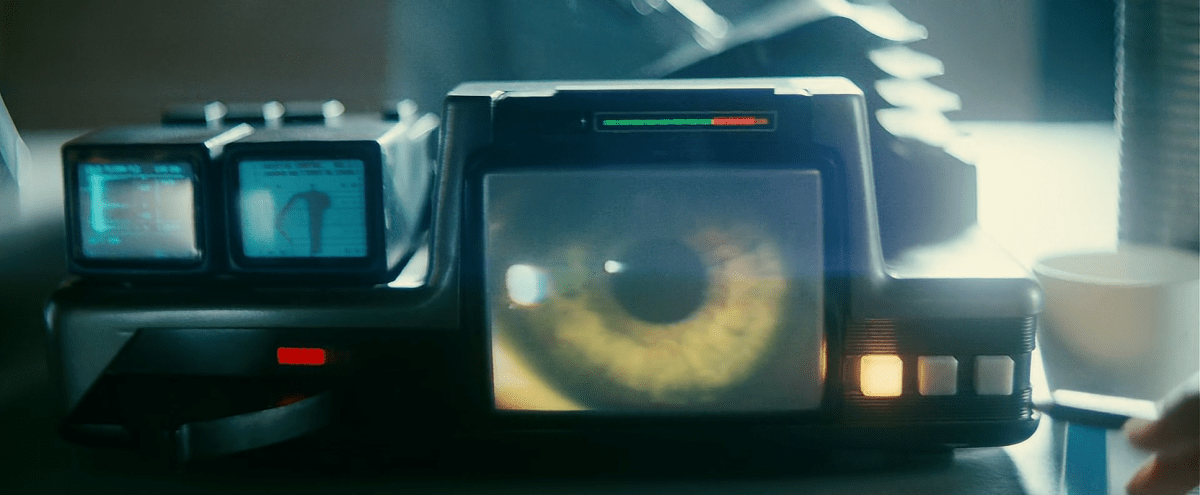Welcome to our Orphan Black science recaps, where Casey, a graduate student in genetics and developmental biology, and Nina, a professional science communicator, examine the science in each episode of OB and talk you through it in (mostly) easy-to-digest terms. Check out our regular OB recap for this episode here.
If you haven’t watched the latest episode of Orphan Black, be forewarned: there will be spoilers. There will also be crazy science.
Nina: For those who are still getting used to the Castor clone scene, I feel that we should recap that Seth is the mustachioed clone (okay, this may have just been an excuse for me to write out the word “mustachioed”); and Rudy is the sometimes-naked, scar-faced clone that we first met in Marion Bowles’s basement prison.
Casey: In this episode, we got more acquainted with the Castor clones and their mysterious “glitching” illness. As we saw a bit in the premiere and more in episode 2, Seth experienced mental flashes, often associated with high intensity moments, which eventually led to an extreme episode, leaving Rudy no choice but to shoot him to free him from the pain.
Nina: I want to rewind a bit and visit the scene where Paul is testing the Castor clones on syllogistic reasoning (syllogisms are logic questions like “Some pigs are predators, no predator is a pet. Conclusion: Some pigs are not pets.”) while a camera is tracking the clones’ eyes. There’s been some buzz about how Paul’s machine resembles a Voight-Kampff machine from Blade Runner (and it’s a confirmed homage!), but eye-tracking tech like this is often used in cognitive testing. The Voight-Kampff test is looking for biometric indicators of empathy; in real life—and more likely in this case—we often look to pupil dilation as an indicator for cognitive workload (AKA thinking effort) and we look to tiny involuntary eye movements, known as saccades, as indicators for attention. Although this sort of testing isn’t unusual, it’s odd that Paul just pops by a hotel room with a portable test. It looks like he’s looking for signs of glitching, and looking for it routinely.

Casey: It seems to me that the Castor clones have been aware of this illness for some time, as Seth’s interrogation with Mrs. S and Kira being held hostage by Rudy were both focused on obtaining the original genome. It seems, like the Leda clone disease, the original genome could hold the key to the cure for Castor, signifying that this disease may also be a result of a synthetic sequence gone awry.
As Ethan Duncan explained to Cosima back in 2×09, the infertility sequence was placed in the Leda genome in order to prevent the propagation of the Leda genes to offspring and the clone disease was an unforeseen side effect. The scientists in control of Leda were looking to control their subjects, keep them in the confines of their experiment, but this control came with serious consequences.
Perhaps the Castor illness shares a similar origin. Castor has always been a military project, so while the scientists were working on the Castor genome they must’ve been aware that the clones would be raised by the military, as soldiers. Aside from brute strength and speed, a key aspect to being a successful soldier is the mind—mental stability under pressure, critical thinking, snap decision making, all fall under required skills for the best soldiers. It wouldn’t be out of the realm of possibility for the scientists to attempt to tweak the mental capabilities of the Castor clones by inserting some synthetic sequence to improve some aspect of their brain. And it seems that, like the Leda clones, this synthetic sequence with the purpose of controlling the clones has inadvertently turned into a mortal weakness.
It is also possible that this Castor glitch is associated with rage. We saw Seth glitch under times of stress, when he was frustrated. If the scientists tweaked the Castor genome to enhance mental stability or acuity, it is possible that the fatal problem is so closely linked to the initial target of the sequence. Such is the case with the Leda disease; the original target was the endometrium, which is the lining of the uterus, but the uterus also happens to be where the clone disease begins, with polyps in the uterus that then spread to the lungs. It would play nicely into the Orphan Black themes to have the Castor disease mirror the Leda disease in such a way.
Nina: If I had to choose a brain region to tweak to make super soldiers, I’d probably go for the anterior cingulate cortex (ACC). This area of the brain is associated with functions such as fear learning, pain registration, attention, emotions, empathy, and impulse control—all areas that would have critical roles in military duty. This area of the brain also plays a major role in human bonding, so that might explain the Castors’ strangely close relationships.

The ACC is also very connected to the amygdalae, two almond-shaped structures in the brain that control rage and aggression behaviours. This can definitely tie in with Casey’s rage-linked glitch theory. Injury to the ACC can trigger fear and aggression; it can also cause issues with attention and judgment. Degeneration in this area is often seen with conditions such as schizophrenia and Alzheimer’s disease.
Casey: It will be interesting to see how this storyline progresses throughout the season, and whether or not they can discover a cure (my money is still on the Leda genome holding the answers).
Casey Griffin is a graduate student in genetics and developmental biology. She dissects mouse hearts, does lots of PCRs, and nerds (and cries and screams) about Orphan Black. You can check out her OB Science Time Tumblr posts here.
Nina Nesseth is a professional science communicator, emerging playwright, and serial tea-drinker. She’s happiest when science-ing at people (yes, that’s “science” as a verb) and watches way too many movies (but she lacks stamina and falls asleep if she tries to watch two in a row). You can find her on Twitter @cestmabiologie.
—Please make note of The Mary Sue’s general comment policy.—
Do you follow The Mary Sue on Twitter, Facebook, Tumblr, Pinterest, & Google +?









Published: Apr 30, 2015 4:58 PM UTC